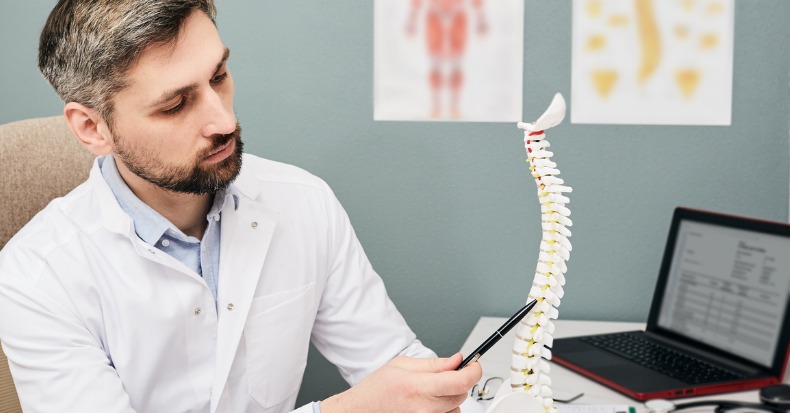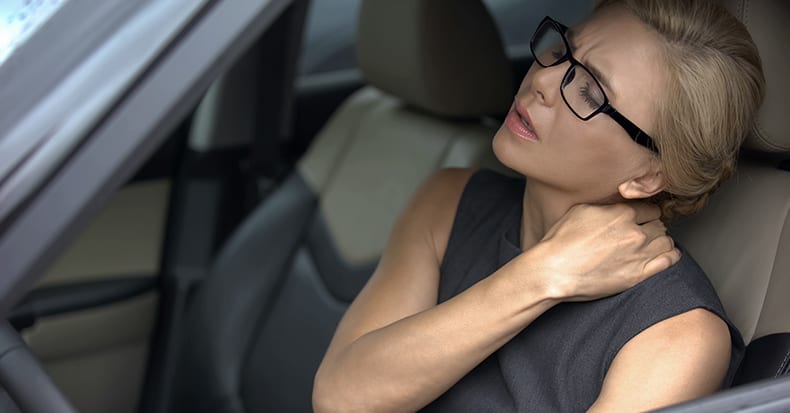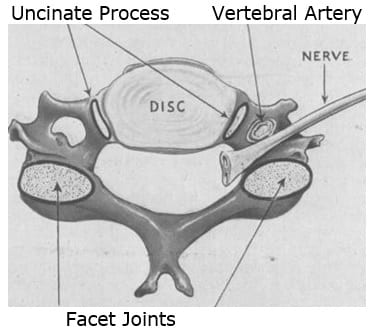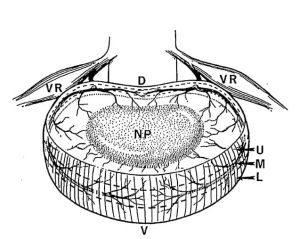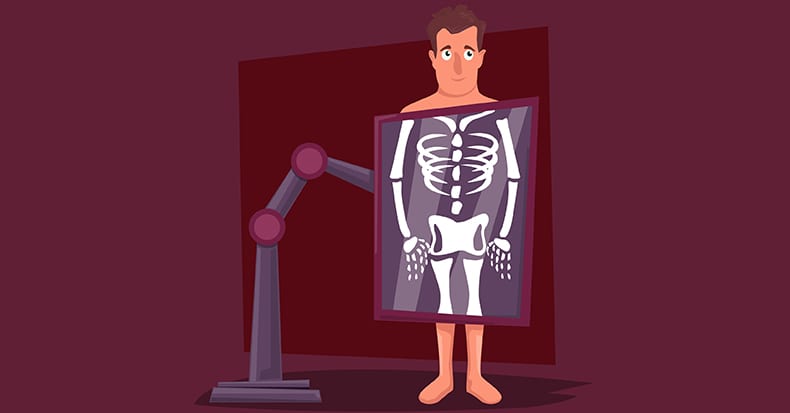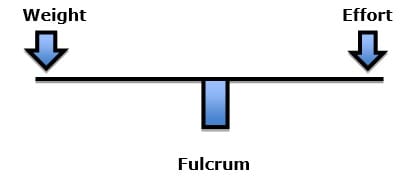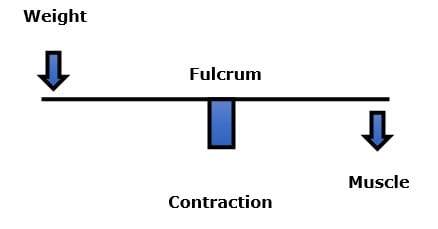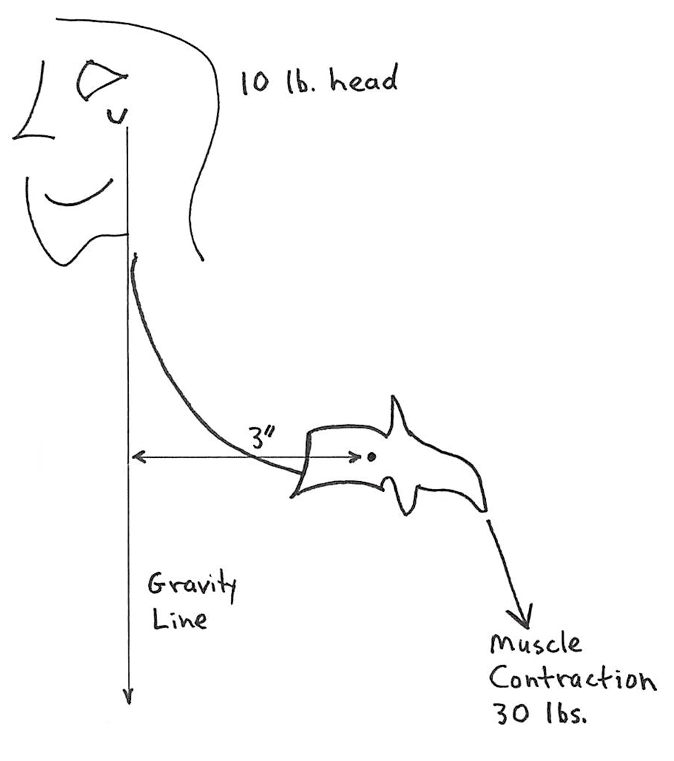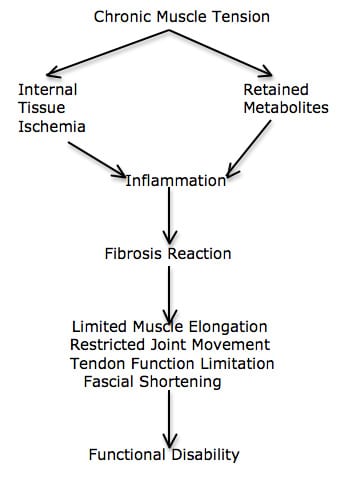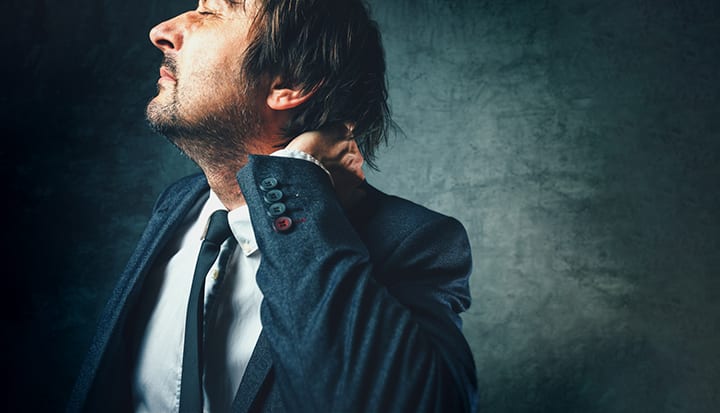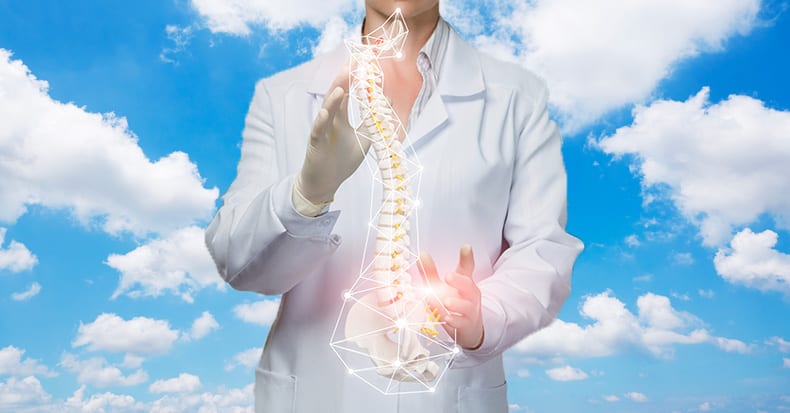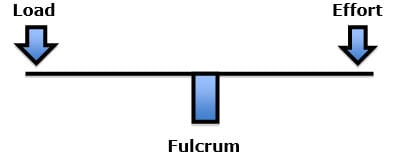LEGITIMIZING BACKGROUND
The United States National Library of Medicine (NLM) is operated by the United States federal government, and is the world’s largest medical library. It is located in Bethesda, Maryland. The NLM is part of the National Institutes of Health (NIH), U.S. Department of Health and Human Services. NLM started in 1836 as a small collection of medical books and journals in the office of the U.S. Army Surgeon General (1).
As the world’s largest medical library, a search engine for the content of the NLM was developed and is called PubMed (2). PubMed was developed and is maintained by the National Center for Biotechnology Information (NCBI) at the U.S. National Library of Medicine (NLM), located at the National Institutes of Health (NIH). PubMed is a globally free resource supporting the search and retrieval of peer-reviewed biomedical and life sciences literature with the aim of improving health–both globally and personally. Presently (2020), the PubMed database contains more than 30 million citations and abstracts of peer-reviewed biomedical literature. Citations in PubMed primarily stem from the biomedicine and health fields, and related disciplines such as life sciences, behavioral sciences, chemical sciences, and bioengineering.
The PubMed system was offered free to the public starting in June 1997. “If your journal was in MEDLINE/PubMed, it had gone through an exhaustive evaluation, and had earned a badge of legitimacy.” (3)
The Journal of Chiropractic Humanities is PubMed indexed. It is also currently indexed in Cumulative Index to Nursing and Allied Health Literature (CINAHL), Manual Alternative and Natural Therapy Index System (MANTIS), and the Index to Chiropractic Literature (ICL). (4) The webpage for the journal states (4):
The Journal of Chiropractic Humanities is a peer-reviewed journal devoted to providing a forum for the chiropractic profession to disseminate information dedicated to chiropractic humanities. The primary purpose of the Journal of Chiropractic Humanities is to foster scholarly debate and interaction within the chiropractic profession regarding the humanities, which includes history, philosophy, linguistics, literature, jurisprudence, ethics, theory, sociology, comparative religions, and aspects of social sciences that address historical or philosophical approaches. The journal’s objective is to fulfill this purpose through careful editorial review and publication of expert work, by creating legitimate dialogue in a field where a diversity of opinion exists, and by providing a professional forum for interaction of these views.
••••••••••
By a significant percentage, the primary reason patients go to chiropractors is for the management of spinal (low back and neck) pain (5). The actual number is 93% (63% for low back pain, 30% for neck pain). The effectiveness of chiropractic care for spinal pain is unquestioned and hence chiropractic care (spinal manipulation) is routinely included in spine pain clinical guidelines (6, 7, 8, 9, 10).
Increasingly larger percentages of healthcare for Americans is through various government programs (Medicare, Medicaid (Medical), Affordable Health Care (Obamacare), etc.). Costs are always a concern in these programs. An honest and thorough assessment of the costs for chiropractic services for the management of musculoskeletal spine pain is long overdue.
Such an appraisal was published in the PubMed indexed Journal of Chiropractic Humanities and titled (11):
Cost-Efficiency and Effectiveness of Including
Doctors of Chiropractic to Offer Treatment Under Medicaid:
A Critical Appraisal of Missouri Inclusion
of Chiropractic Under Missouri Medicaid
As noted in the title, the article is a critical appraisal of the cost effectiveness for the inclusion of chiropractic services under Missouri Medicaid. Yet, the author’s presentation includes data from published studies throughout the United States’ healthcare delivery system pertaining to the value of chiropractic. Overall, 79 studies are cited. The lead author John R. McGowan, PhD, is an accounting professor at Saint Louis University, St. Louis, Missouri. Undoubtedly as a consequence of his accounting expertise, Dr. McGowan’s study includes extensive mathematical analysis, displayed in many graphs and tables.
All chiropractors and/or public healthcare policy decision makers who are engaging in efforts to expand the use and inclusion of chiropractic for the complaints of neck and/or back pain should make use of this vital article.
The authors begin by noting that the vetting of the benefits of chiropractic for the complaints of neck and/or back pain has been flawed, resulting in flawed conclusions that are both harmful to the chiropractic profession as well as harmful to the public good. They state:
“Policymakers may unintentionally rely on flawed assumptions and methodologies such as static scoring, which we propose results in flawed conclusions.”
The objectives of this study were to critically evaluate the methodology and conclusions of the fiscal notes prepared by the state of Missouri for including Doctors of Chiropractic (DCs) under Missouri Medicaid and to calculate the savings if Chiropractors were allowed to offer treatment under Missouri Medicaid.
These authors suggest that when the Missouri Health Division initially assessed the value of Chiropractic, for the Missouri Medicaid program, for the management of neck and low back pain, that their scoring approach was (“unintentionally”) flawed, and as such they undervalued the fiscal benefits of chiropractic. Hence, these authors re-evaluated the value of chiropractic for the Missouri Medicaid program using improved assumptions.
These authors assessed 3 cost saving values attributed to chiropractic care:
- Cost savings from chiropractic care v. traditional MD/DO care
- Cost savings from reductions in spinal surgery
- Cost savings from reduced use and abuse of opioid prescription drugs
This article proposes that chiropractors deliver care that is more effective and less costly than the current model.
Reimbursement for chiropractic care is provided by Medicare in all 50 states, and by Medicaid in most states. The decision to provide coverage in each state is based on policymakers’ perceptions of both benefits and cost. If policymakers’ perceptions are based upon flawed assumptions, everyone loses.
The distribution of providers for spine care in the United States shows that chiropractic care is second, accounting for more than a quarter of all cases:
- 61% Medical Doctor and/or Doctor of Osteopathy (MD/DO)
- 28% Doctor of Chiropractic (DC)
- 11% from a combination of providers
The study cites support indicating that orthopedic conditions contribute to more medical expenses than any other condition, and that back and neck pain account for a greater percentage of orthopedic expenses than all other orthopedic conditions. Spine pain is among the top 10 most costly of all medical conditions treated in the United States. They estimate that the 2018 annual expenditures on low back and neck pain is about $120 billion, and that these expenditures do not include those from the decrease in employee productivity. The authors make these points:
- “Spine pain is a pervasive health care problem in the United States.”
- “There is an 80% chance that people will have back pain at some point in their lives.”
- “In the US, neck pain is one of the top musculoskeletal disorders in the adult population.”
- The fourth most pervasive reason for disability globally is neck pain.
- “Between 1990 and 2010, the US had a 29% increase in neck pain.”
- “More US adults have chronic pain (headache, neck or back pain, arthritis, or joint pain) than heart disease, diabetes, and cancer combined.”
- “Chiropractic-delivered services for back and neck pain are significantly more cost-effective when compared with all alternative approaches.”
- “The benefits of care provided by doctors of chiropractic (DCs) have been demonstrated by research throughout the US health care system.”
- “Although there are potentially numerous beneficial clinical outcomes from DC treatment, perhaps the greatest clinical outcome is the reduction of neck and low back pain.”
The authors cite these studies to support their arguments:
A 4-year study compared health care expenditures of 700,000 health plan members who had a chiropractic benefit with 1 million members of the same plan without the same benefit and concluded that systematic access to managed chiropractic care lowers overall health care costs and results in improved clinical outcomes. (12)
A joint study between the American Pain Society and the American College of Physicians considered non-pharmacologic therapies available for acute and chronic low back pain, showing (7):
- Spinal manipulation was recognized by the panel as an effective treatment for both acute and chronic low back pain.
- The panel noted that over 90% of spinal manipulations are performed by chiropractors.
In 2009, Arnold Milstein of Mercer Health and Benefits and Niteesh Choudhry of Harvard Medical School compared chiropractic-delivered care to that provided by medical physicians (13). The authors note:
- The annual cost for treatment of neck pain by chiropractors was lower than treatment from medical physicians.
- “When considering effectiveness and cost together, chiropractic physician care for low back pain and neck pain is highly cost-effective and represents a good value in comparison to medical physician care.”
- “Our findings in combination with existing US studies published in peer-reviewed scientific journals suggest that chiropractic-delivered care for the treatment of low back and neck pain is likely to achieve equal or better health outcomes at a cost that compares very favorably to most therapies that are routinely covered in US health benefit plans.”
- “Both value and clinical outcomes show marked improvement with the addition of chiropractic coverage for the treatment of low back and neck pain in US employer-sponsored health benefit plans.”
Over a 2-year period, a BlueCross/BlueShield of Tennessee study examined a fully insured population of 85,000 subscribers (14). Their findings include:
- “Patients who experience low back pain and seek treatment first from a chiropractic rather than an MD/DO save 40% on average of health care-related costs.”
- “Episodes of care started with a chiropractor were 20% less expensive than episodes started with an MD/DO.”
- For BlueCross/BlueShield of Tennessee, chiropractic-initiated episodes of care could lead to an annual cost savings of approximately $2.3 million.
- “Insurance companies may be inadvertently paying more for care with restricted access to chiropractic-initiated care than if such restrictions were removed.”
The authors note that seeing a chiropractor does not increase overall healthcare spending. They report:
- “Adults in the United States who chose chiropractic care, the most common type of complementary and alternative medicine (CAM) used by people with spine problems, has increased by 57% from 1997 to 2006.” (15)
- “Treatment by CAM providers lowers cost when compared with treatment from traditional medical providers.” (16)
- Chiropractors provided approximately 75% of all CAM services (17).
- Overall medical spending is not increased from seeking care from any CAM provider, including a chiropractor.
- “Hospitalization expenditures were significantly lower for those who used complementary and alternative providers, including chiropractic.”
A Canadian Study showed that chiropractic care was more cost-effective than usual care (18).
- Chiropractor-delivered spinal manipulations were very effective for low back pain compared to usual care administered by primary care MDs.
- Chiropractic-delivered manipulation is less costly than physiotherapy or GP care (19).
- “Manual therapy techniques are more cost-effective for low back and shoulder pain and disability than care delivered by general practitioners (GPs) alone or with exercise, spinal stabilization, GP advice, advice to remain active, or brief pain management.”
- Chiropractic-delivered manipulations are less costly and more effective for neck pain than the alternatives.
- “Evidence showed manual therapy to be economically advantageous compared with other treatments of musculoskeletal conditions.”
- “Chiropractic-delivered therapy is equally effective and more cost-efficient that usual medical care.”
A 2015 study from the journal Spine showed (20):
- Of patients receiving chiropractic manipulation, 94% had a 30% reduction in low back pain after 4 weeks, while only 56% of medical care recipients had the same reduction.
- “This suggests a 38% increase in effectiveness by seeing a DC first.”
••••••••••
An important but often under appreciated (and unassessed) benefit of chiropractic care is its potential to reduce the costly and dangerous incidence of spinal surgery. The authors make these points:
- “Research shows that chiropractors are the safest and most effective alternative to surgery for most cases of back pain.”
- “Published research has shown that spine surgeries can be avoided through chiropractic-managed care.” (21)
- The odds of surgery for those who first saw a chiropractor were only 1.4%, while the odds for those who first saw a surgeon were 42.7%.
- “Back pain is over-treated with spine surgeries in the United States.” (22)
- “Back surgeries are among the most expensive operations performed.” (23)
- “Per numerous sources, total costs related to spine surgery are projected to be well more than $100,000.”
- “60% of patients with sciatica benefited from spinal manipulation after attempting medical management and failing to experience any improvement.” (24)
- Chiropractic treatment “leads to 60% reduction in spinal surgery.”
- “In light of the research showing that chiropractic-managed care can reduce the incidence of spinal surgery, it is reasonable to suppose that a number of surgeries could be avoided through routine chiropractic management.”
- “One fact is sure, patients in the Missouri Medicaid system would benefit from the avoidance of spinal surgeries, and this would lead to significant cost savings for the state.”
••••••••••
Another important and also under-appreciated (and unassessed) benefit of chiropractic care is its potential to reduce the costly and dangerous use of narcotic drugs, the opioid epidemic. Opioids, especially with long-term use, increase the risks of addiction, overdose and death. According to the Centers for Disease Control, opioid use disorder and overdose have been a growing problem throughout the United States. The quantity of opioids prescribed has been dramatically increasing since the 1990s, and the number of overdoses and deaths from prescription opioids has also increased. A study in 2018, authored by physicians from Harvard, Johns Hopkins, and Louisiana State University stated (25):
“Tragically, opioids claimed over 64,000 lives just last year.”
Pertaining to the opioid epidemic, these authors (McGowan et al), make these points:
- “Prescription opioid use is steadily increasing across the US and in Missouri.” (26)
- “Opioid abuse affects all branches of society.”
- “More than 130 people die each day in the US from opioid overdose.”
- “The misuse of prescription pain relievers, heroin, and synthetic opioids such as fentanyl and other opioids constitute a serious national crisis.”
- Opioid use is lower for patients who receive treatment from chiropractors compared to non-recipients (27).
- “The probability of getting a prescription for opioids was 55% lower in the chiropractic recipient cohort.”
- “Opioid prescription refills were 78% lower for patients who received treatment from chiropractors.” (28)
- There is a “growing body of research that is promoting DC-delivered care as an alternative to the use and abuse of opioid prescription drugs.”
- The over prescription of opioids, “38% of the US population, or 92 million adults, took doctor-prescribed Oxycontin or Percocet.” (29)
- “The fact that chiropractors do not prescribe opioids” is important. “Chiropractors treat low back and neck pain without resorting to the prescription of opioids or any other type of drugs.”
- “Missouri Policymakers Recognize Chiropractic Alleviates Opioid Cost” (30)
- “The Missouri Oversight Committee recognized the savings that would accrue to the state if individuals sought DC care rather than traditional MD/DO care for neck and low back pain.”
- “Chiropractic care would lead to reductions in costs from the abuse of opioid prescription drugs.”
•••••
This study by McGowan et al did not review these supportive investigations:
- A study of 6,868 low back pain subjects from New Hampshire, published in The Journal of Alternative and Complementary Medicine, titled (31):
Association Between Utilization of Chiropractic Services
for Treatment of Low-Back Pain and Use of Prescription Opioids
The study showed:
“Among patients with low-back pain, recipients of services delivered by Doctors of Chiropractic have a lower likelihood of using prescription opioids [by 55%], compared with non-recipients.”
Chiropractic care “could exert a positive impact on patients with low-back pain by reducing unnecessary care, lowering costs, and improving safety.”
“Pain relief resulting from services delivered by Doctors of Chiropractic may allow patients to use lower or less frequent doses of opioids, leading to reduced risk of adverse effects.”
“Conclusions: Among New Hampshire adults with office visits for non-cancer low-back pain, the likelihood of filling a prescription for an opioid analgesic was significantly lower for recipients of services delivered by Doctors of Chiropractic compared with non-recipients.”
- A study was published in 2020 from Yale School of Medicine that assessed 62,624 subjects, in the journal Pain Medicine, titled (32):
Association Between Chiropractic Use and Opioid Receipt
Among Patients with Spinal Pain:
A Systematic Review and Meta-analysis
This study noted:
“Utilization of chiropractic services are negatively associated with opioid use, and thus may warrant further investigation to determine if chiropractic care may be an effective component of opioid prescription reduction strategies.”
“This review demonstrated an inverse association between chiropractic use and opioid receipt among patients with spinal pain.”
“Chiropractic users had 64% lower odds of receiving an opioid prescription than nonusers.”
“Developing a better understanding of the relationship between chiropractic care and opioid use has the potential to impact clinical decisions and health care policy, especially concerning access to chiropractic services within health care systems and sequencing with other therapies.”
SUMMARY FROM McGOWAN et al
The Missouri Health Division had used increasingly flawed assumptions and methodologies over the past years in their cost estimates pertaining to chiropractic care, resulting in flawed conclusions pertaining to chiropractic care.
Current research on the cost-effectiveness of chiropractic-delivered care compared to usual medical care reveals:
- “People with insurance coverage that includes chiropractic had lower annual health care costs.”
- “Those who seek chiropractic-guided treatment first saved an average of 40% on annual health care costs.”
- “Seeking treatment from a chiropractor did not add to overall medical spending.”
- “Chiropractic-directed treatment led to a 60% decrease in spinal surgeries.”
- “Chiropractic-directed care was 38% less costly than usual medical care.”
- “Chiropractic-delivered care lowered costs and increased positive outcomes.”
- “Too often, people who seek relief from lower back pain through usual medical care end up taking painkillers, which are addictive and lead to negative outcomes.”
- “Patients who visit DCs not only find relief from neck and lower back pain at lower annual cost, but also they report their outcomes to be more effective.”
- “Chiropractic care leads to cost savings from reduced use and abuse of opioid prescription drugs.”
- “There are now a dozen states that have embraced alternative therapies such as DC care to combat the cost of the opioid abuse epidemic.”
- “This study supports the proposition that treatment by DCs for neck and lower back pain may reduce the use and abuse of opioid prescription drugs.”
- “Chiropractic treatment and care leads to a reduction in cost of spinal surgery.”
REFERENCES
- https://www.nih.gov/about-nih/what-we-do/nih-almanac/national-library-medicine-nlm
- https://www.nlm.nih.gov/bsd/pubmed.html
- https://scholarlykitchen.sspnet.org/2017/09/07/confusion-journals-pubmed-now/
- https://www.journals.elsevier.com/journal-of-chiropractic-humanities
- Adams J, Peng W, Cramer H, Sundberg T, Moore C; The Prevalence, Patterns, and Predictors of Chiropractic Use Among US Adults; Results From the 2012 National Health Interview Survey; Spine; December 1, 2017; Vol. 42; No. 23; pp. 1810–1816.
- Chou R; Qaseem A, Snow V, Casey D, Cross JT, Shekelle P, Owens DK; Diagnosis and Treatment of Low Back Pain; Annals of Internal Medicine; Vol. 147; No. 7; October 2007; pp. 478-491.
- Chou R, Huffman LH, MS; Non-pharmacologic Therapies for Acute and Chronic Low Back Pain; Annals of Internal Medicine; October 2007; Vol. 147; No. 7; pp. 492-504.
- Globe G, Farabaugh RJ, Hawk C, Morris CE, Baker G, DC, Whalen WM, Walters S, Kaeser M, Dehen M, DC, Augat T; Clinical Practice Guideline: Chiropractic Care for Low Back Pain; Journal of Manipulative and Physiological Therapeutics; January 2016; Vol. 39; No. 1; pp. 1-22.
- Wong JJ, Cote P, Sutton DA, Randhawa K, Yu H, Varatharajan S, Goldgrub R, Nordin M, Gross DP, Shearer HM, Carroll LJ, Stern PJ, Ameis A, Southerst D, Mior S, Stupar M, Varatharajan T, Taylor-Vaisey A; Clinical practice guidelines for the noninvasive management of low back pain: A systematic review by the Ontario Protocol for Traffic Injury Management (OPTIMa) Collaboration; European Journal of Pain; Vol. 21; No. 2 (February); 2017; pp. 201-216.
- Qaseem A, Wilt TJ, McLean RM, Forciea MA; Noninvasive Treatments for Acute, Subacute, and Chronic Low Back Pain: A Clinical Practice Guideline from the American College of Physicians; For the Clinical Guidelines Committee of the American College of Physicians; Annals of Internal Medicine; April 4, 2017; Vol. 166; No. 7; pp. 514-530.
- McGowan JR, Suiter L; Cost-Efficiency and Effectiveness of Including Doctors of Chiropractic to Offer Treatment Under Medicaid: A Critical Appraisal of Missouri Inclusion of Chiropractic Under Missouri Medicaid; Journal of Chiropractic Humanities; December 2019; Vol. 10; No. 26; pp. 31-52.
- Legorreta A, Metz D, Nelson S, Ray H, Chernicoff O, DiNubile N; Comparative analysis of individuals with and without chiropractic: characteristics, utilization, and costs; Archives of Internal Medicine; October 11, 2004; Vol. 164; No. 18; pp. 1985-1992.
- Choudhry N, Milstein A; Do chiropractic physician services for treatment of low-back and neck pain improve the value of health benefit plans? An evidence-based assessment of incremental impact on population health and total health care spending; Mercer Health and Benefits; 2009.
- Liliedahl R, Finch M, Axene D, Goertz CM; Cost of care for common back pain conditions initiated with chiropractic doctor vs medical doctor/doctor of osteopathy as first physician: experience of one Tennessee-based general health insurer; Journal of Manipulative and Physiological Therapeutics; Nov-Dec 2010; Vol. 33; No. 9; pp. 640–643.
- Davis M, Sirovich B, Weeks W; Utilization and expenditures on chiropractic care in the United States from 1997 to 2006; Health Services Research; June 2010; Vol. 45; No. 3; pp. 748–761.
- Metz R, Nelson C, LaBrot T, Pelletier K; Chiropractic care: is it substitution care or add-on care in corporate medical plans? Journal of Occupational Environmental Medicine; August 2004; Vol. 46; No. 8; pp. 847–855.
- Ndetan H, Bae S, Evans M, Rupert R, Singh K; Characterization of health status and modifiable risk behavior among United States adults using chiropractic care as compared with general medical care; Journal of Manipulative and Physiological Therapeutics; Jul-Aug 2009; Vol. 32; No. 6; pp. 414–422.
- Bishop P, Quon J, Fisher C, Dvorak M; The chiropractic hospital-based interventions research outcomes (CHIRO) study: A randomized controlled trial on the effectiveness of clinical practice guidelines in the medical and chiropractic management of patients with acute mechanical low back pain; Spine Journal; December 2010; Vol. 10; No. 12; pp. 1055–1064.
- Tsertsvadze A, Clar C, Court R, Clarke A, Mistry H, Sutcliffe P; Cost-effectiveness of manual therapy for the management of musculoskeletal conditions: A systematic review and narrative synthesis of evidence from randomized controlled trials; Journal of Manipulative and Physiological Therapeutics; Jul-Aug 2014; Vol. 37; No. 6; pp. 343–362.
- Schneider M, Hass M, Glick R, Stevans J, Landsittel D; Comparison of spinal manipulation methods and usual medical care for acute and sub-acute low back pain: A randomized clinical trial; Spine; February 15, 2015; Vol. 40; No. 4; pp. 209–217.
- Keeney B, Fulton-Kehoe D, Turner J, Wickizer T, Chan K, Franklin G; Early predictors of lumbar surgery after occupational back injury: Results from a prospective study of workers in Washington State; Spine; May 15, 2013; Vol. 38; No. 11; pp. 953–964.
- Deyo R, Mirza S, Turner J, Martin B; Overtreating chronic back pain: Time to back off?; Journal of the American Board of Family Medicine; Jan-Feb 2009; Vol. 22; No. 1; pp. 62–68.
- Smith JC; Back surgery: Too many, too costly, and too ineffective; To Your Health; 2011; Vol. 5; No. 6.
- McMorland G, Suter E, Casha S, du Plessis S, Hurlbert R; Manipulation or microdiskectomy for sciatica? A prospective randomized clinical study; Journal of Manipulative and Physiological Therapeutics; October 2010; Vol. 33; No. 8; pp. 576–584.
- Jones MR, Viswanath O, Peck J, Kaye AD, Gill JS, Simopoulos TT; A Brief History of the Opioid Epidemic and Strategies for Pain Medicine; Pain Therapy; June 2018; Vol. 7; No. 1; pp. 13-21.
- Centers for Disease Control and Prevention/NCHS, National Vital Statistics System, Mortality, CDC WONDER. Atlanta, GA: US Department of Health & Human Services; 2018.
- Alexander GC, Lyapustina T; The prescription opioid addiction and abuse epidemic: how it happened and what we can do about it; Pharmacology Journal; 2015; Vol. 294; 7866.
- Dorr H, Townley C; Chronic pain management therapies in Medicaid: Policy considerations for non-pharmacological alternatives to opioids; National Academy for State Health Policy; August 2016.
- Hughes A, Williams M, Lipari R, Bose J, Copello E, Kroutil L; Prescription drug use and misuse in the United States: Results from the 2015 national survey on drug use and health; National Survey on Drug Use and Health Data Review; Substance Abuse and Mental Health Services Administration; September 2016.
- Taylor J; Missouri legislature passes measure to let Medicaid cover chiropractic care; MissouriNet; June 5, 2018.
- Whedon JM, Toler AWJ, Goehl JM, Kazal LA; Association Between Utilization of Chiropractic Services for Treatment of Low-Back Pain and Use of Prescription Opioids; The Journal of Alternative and Complementary Medicine; June 2018; Vol. 24; No. 6; pp. 552-556.
- Corcoran KL, Bastian LA, Gunderson CG, Steffens C, Brackett A, MA, Lisi AJ; Association Between Chiropractic Use and Opioid Receipt Among Patients with Spinal Pain: A Systematic Review and Meta-analysis; Pain Medicine; February 1, 2020; Vol. 21; No. 2; e139-e145.
“Authored by Dan Murphy, D.C.. Published by ChiroTrust® – This publication is not meant to offer treatment advice or protocols. Cited material is not necessarily the opinion of the author or publisher.”
